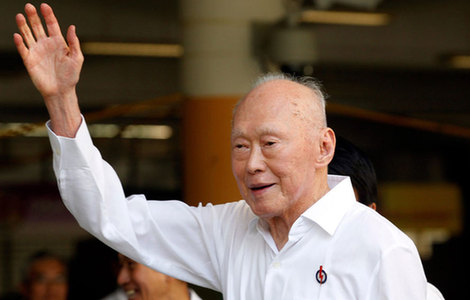Mummified Buddha shown in Hungarian stolen from China: government
Updated: 2015-03-23 03:11
(Xinhua)
|
||||||||
 |
|
A CT scan shows a body, whose internal organs were removed, concealed in an ancient Chinese statue of a Buddha. [Photos provided by the Drents Museum] |
Chinese relic experts have determined a 1,000-year-old Buddha statue containing a mummified monk, which is now in possession of a Dutch private collector, is a relic stolen from an east China village in 1995.
The Cultural Relic Bureau in east China's Fujian Province said on Sunday that judging from research and media reports, experts have confirmed that the statue on show in Hungarian Natural History Museum was a relic stolen from Yangchun Village in Fujian in 1995.
The bureau will continue the relic investigation in the village and search for more information while reporting to the national cultural authorities in order to identify and trace the stolen relic in compliance with normal procedures, said a bureau spokesman.
The statue was on a "Mummy World" exhibition at the Hungarian Natural History Museum that opened in October last year and was originally scheduled to be on display until May 17, but was pulled from the exhibition on Friday as the museum said "the Dutch owner withdrew the statue without giving any reason."
Villagers in Yangchun burst into tears while other lit fireworks after seeing the statue via Chinese TV news earlier this month.
The bureau immediately dispatched experts to the village to investigate the issue. Through the research, experts found a large amount of photos, relics and historical records including a pedigree suggesting the mummy was a former ancestor (or Zushi in Chinese) of the local clan.
The statue, formerly housed in the village temple, was stolen in 1995. It wore a hat and clothes when sitting in the temple, and was worshiped as an ancestor.
According to Yangchun archives, the Buddha, named Zhanggong Zushi, was a local man who became a monk in his 20s and won fame for helping people treat disease and spread Buddhist belief. When he died at the age of 37, his body was mummified and local people made a statue with the mummy inside at around the time in China's Song Dynasty (960-1279). The statue has been worshipped in the village temple ever since.
In the temple, local people still preserve the statue's hat and clothes and other affiliated relics.
- Mummified Buddha shown in Hungarian stolen from China: government
- China's Belt, Road initiatives not geo-strategic tool: official
- Expert says new model needed for China's new growth
- Chinese Korean War soldiers buried
- China invests billions in Silk Road countries
- 'Outsiders' integrate into social fabric as attitudes change

 China joins legendary flower show
China joins legendary flower show
 Monks perform tea-picking ritual in Hangzhou
Monks perform tea-picking ritual in Hangzhou
 Singapore founding father Lee Kuan Yew
Singapore founding father Lee Kuan Yew
 5 things you may not know about the Spring Equinox
5 things you may not know about the Spring Equinox
 Solar eclipse wows viewers
Solar eclipse wows viewers
 New Year Carnival thrills Vancouver
New Year Carnival thrills Vancouver
 Across America over the week (from March 13 to 19)
Across America over the week (from March 13 to 19)
 How much do world leaders earn?
How much do world leaders earn?
Most Viewed
Editor's Picks

|

|

|

|

|

|
Today's Top News
Singapore former PM Lee Kuan Yew passes away
Six Western economies apply to join AIIB
US urged to honor pledge
Ex-wife of Chinese fugitive
to be released
China's plan to move from being 83
Investors tour Bay Area
Ex-Chinese official indicted in
money laundering
Yahoo to exit from Chinese
mainland market
US Weekly

|

|







